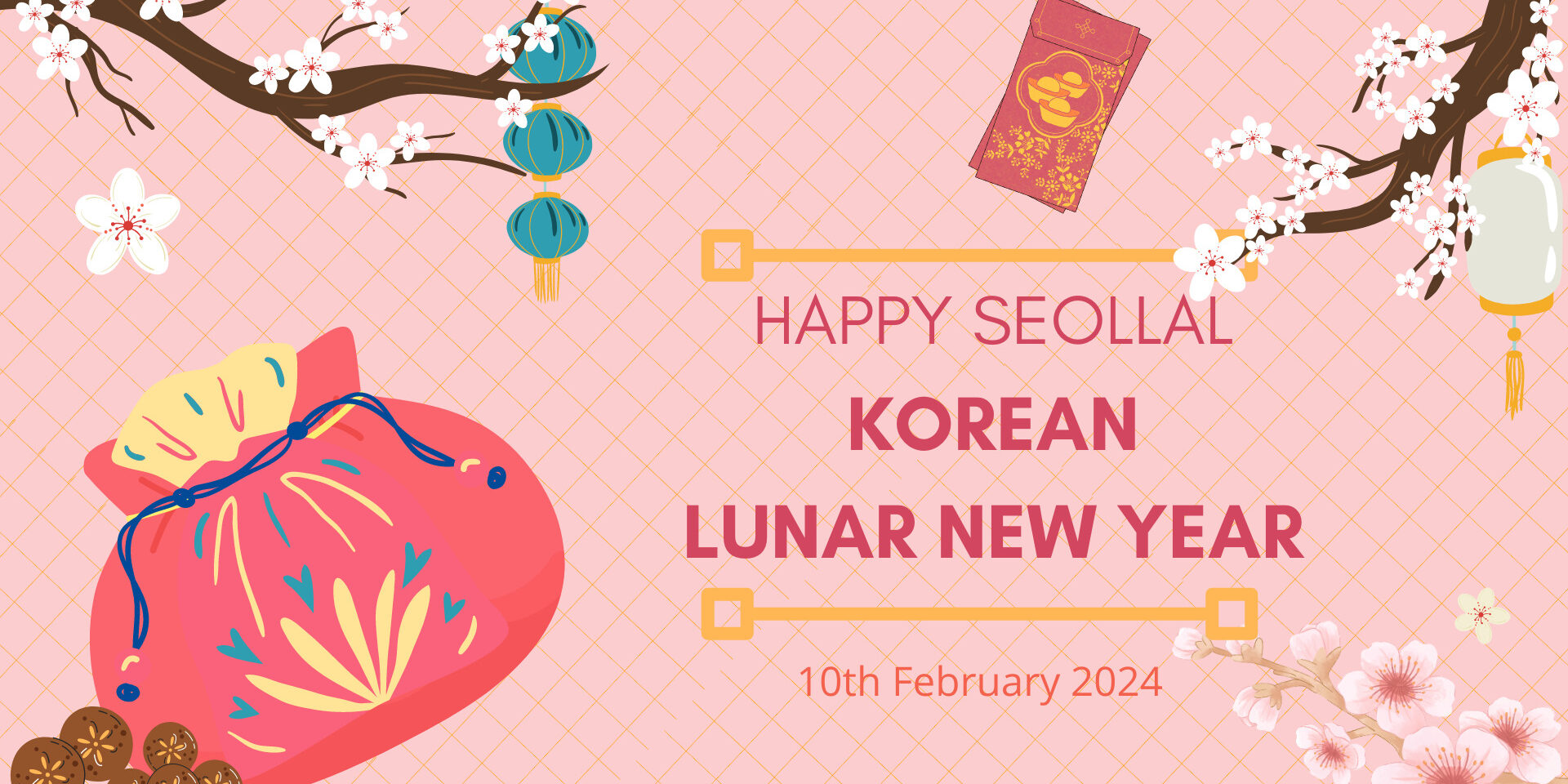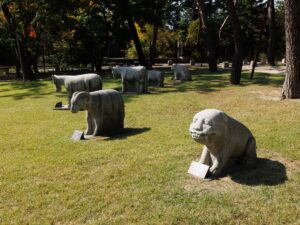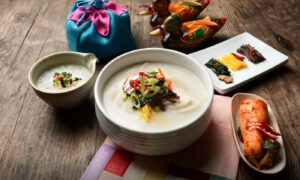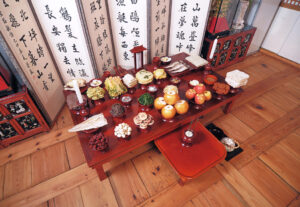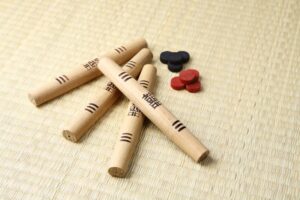Spend the New Year in a new way!
This year, Seollal (설날) is set to happen on February 10th, 2024. In Korea, depending on the day it occurs, the previous and following days of the celebration are usually off (this year: Friday 9th and Monday 12th are off).
However, the date changes every year according to the second new moon after the Winter Solstice (generally between January 21st and February 20th).
But, what is Seollal specifically?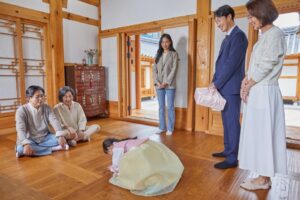
Seollal refers to the Lunar New Year and is known as the most important celebration of the year in South Korea. The term “Seol” (설) commonly means “the beginning of the year” and “Lal” (날) refers to the word “day”. In South Korea, it is a family celebration that lasts 72 hours. While January 1st celebrates the transition to the new year in the western culture, Seollal holds a strong cultural meaning, presenting many traditions.
How to wish someone a happy Seollal?
Koreans mainly say:
새해 복 많이 받으세요. [saehae bok manhi badeuseyo]
- 새해 means « the new year »,
- 복 means « luck »,
- 많이 means « a lot »,
- 받으세요 comes from the verb 받다 meaning « to receive ».
Literally 새해 복 많이 받으세요 could be translated as “Receive lots of luck this New Year”.
Similar to the Gregorian calendar in Western countries which has astrological signs for each month, Korean astrology is based on the Lunar calendar and each year is assigned to an animal (12 in total).
– Rat: 쥐 (jwi), – Ox: 소 (so), – Pig : 돼지 (dwaeji), – Monkey: 원숭이 (weonsungi),
– Tiger: 호랑이 (holangi), – Rabbit: 토끼 (tokki), – Dog: 개 (gae), – Sheep: 양 (yang),
– Dragon: 용 (yong), – Snake: 뱀 (baem), – Rooster: 닭 (dak), – Horse: 말 (mal).
This year is the year of the dragon. And it is supposed to bring luck and good fortune to the ones who were born in the previous dragon years.
![]() Traffic
Traffic
Because Seollal is a family celebration, traffic is usually congested. Traffic is multiplied by 2 or 4 during this time compared to the usual transit areas.
If you plan on traveling by bus or train, make sure to book the tickets months in advance to be able to have one. They sell very fast and it’s often everything is sold out.
Small shopping tips: during Seollal, many shops are closing so you might have to check beforehand in case you were planning to visit them. However, a lot of places are still open during those few days: palaces, museums, cafes, restaurants and shopping malls.
During Seollal, there are different types of traditional food that Koreans eat and that you can only fully enjoy during this celebration:
– Tteokguk (rice cake soup), – Jeon (seafood/meat/vegetables pancake),
– Japchae (soy sauce glass noodles), – Hangwa (sweets or desserts), Sikhye (rice drink).
These dishes are enjoyed in everyday life too, but they also hold important meanings as they’re prominently served on Korean holidays!
Charye (차례) is a ceremony serving as a memorial to ancestors. Food is set out on a table as a gift, where the family’s ancestral tablets are set behind. People perform deep bows on this table, a mark of respect to their ancestors. This tradition is still performed by many South Koreans.
Sebae (세배) is a tradition where younger people must bow to their elders and show their respect towards them. People often wear 한복 (hanbok), specifically the Seolbim (설빔). Sebaetdon (세뱃돈) refers to the money given to the youngers.
Other rituals exists during the celebration of the Lunar New Year, such as Saju (사주) referring to fortune-telling, gift giving, preparing and eating Mandu (만두), or even watching the first sunrise, called Haedoji (해돋이).
During Seollnal, it is very common to play traditional Korean games to spend time with the family:
– Yut Nori (윷놀이): the most popular Seollal game. 4 yuts by teams are needed. The yuts are used as dices and your pawn will move according to the positioning of the sticks once they are launched.
– Neolttwigi (널뛰기): standing at each end of the seesaw, the players face each other. The first player will jump to propel the second into the air.
– Yeonnalligi (연날리기): flying a kite in the sky during Seollal signify that people are letting go of their worries and sending your wishes for the New Year in the sky.
Now, you know a bit more about Korean traditions and important celebrations.
새해 복 많이 받으세요!
Enjoy Seollal!!
By Alice DUPLACIEUX & Tya BÉRAMICE-DRACAN

